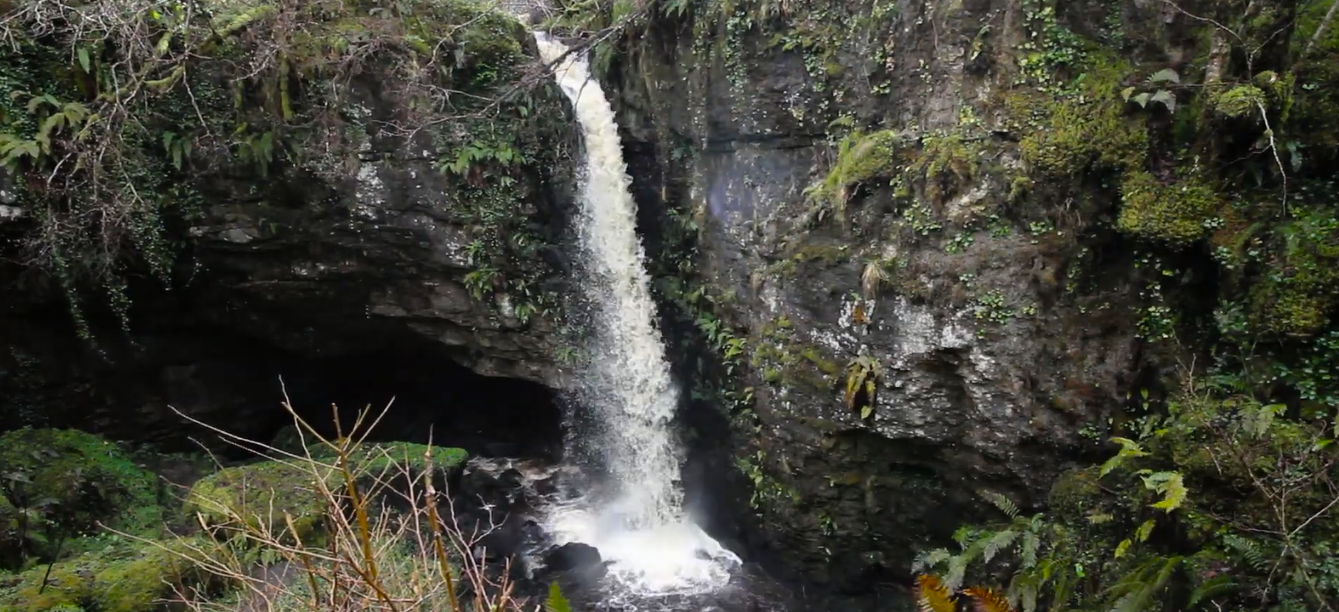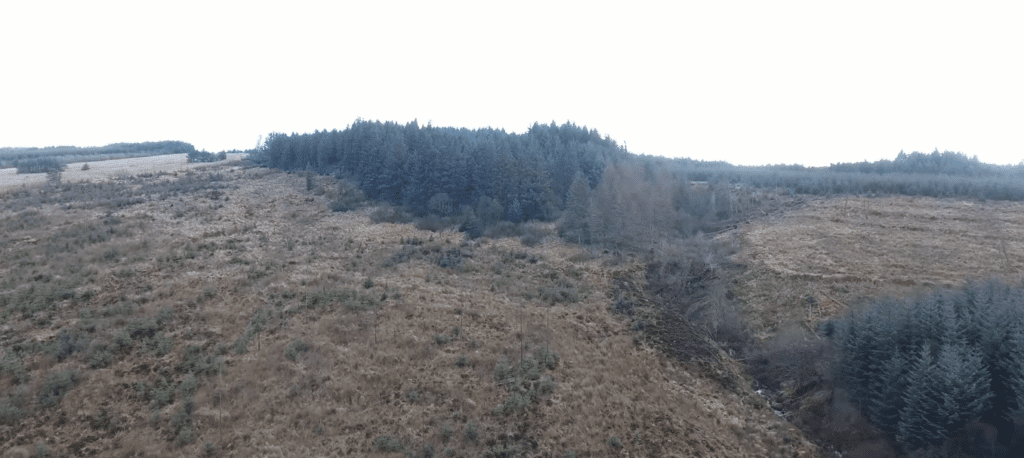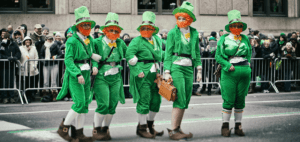Belmore Forest: Pollnagollum Cave, Enniskillen

Updated On: April 15, 2024 by Shaimaa Olwan
Belmore Forest is home to Pollnagollum Cave in County Fermanagh, part of the Marble Arch Caves Global Geopark. You also might have recognised the Cave as it’s been used to film scenes from the Popular Show Games of Thrones. Visitors can also follow the Belmore Forest walk, which leads to a viewing point for the cave.
Provenance
In an incredibly vast landscape like the one Northern Ireland has, one would confidently assume that many wonders are hidden between these landscapes’ green areas. Pollnagollum Cave in Enniskillen, County Fermanagh, is an astounding piece of nature that will take your breath away and make you admire it instantly.
Pollnagolllum Cave is located in the Boho/Belmore Mountain area, right in the heart of Fermanagh’s cave country. If you walk there, you will see a lavish roundabout maze of caves that attract cavers, hikers, and anyone genuinely interested, like Northern Ireland, all from far and wide to west Fermanagh. The first part of the walk passes through the Coolarkan Quarry, built for its limestone rock and is one of many quarries in West Fermanagh.
Pollnagolllum is an active stream passage cave situated in County Clare, Ireland. At over 16 kilometres, Pollnagollum is the longest cave on the island of Ireland and the third deepest cave in the County. The system primarily consists of winding stream passages that interconnect in various ways, offering various through trips. The cave is usually entered via the Pollnagollum entrance, with the mainstream way encountered a short distance inside.
The mainstream continues for most of the length of the cave, with several smaller inlets entering along its length. Near the southern end of the cave, the 30-metre Poulelva Pot is encountered; the two entrances are often used for through-trips. Much of the water in the cave is fed from the sinks of Upper Pollnagollum, at the point where surface water runs off the shale bedrock and sinks into the permeable limestone. The terminus of the cave is a low bedding plane, which eventually becomes too low to progress. The water resurges at the Killarney, rising south of the cave.
History
The first known exploration of the cave was by T. J. Westropp in 1880, venturing as far as the Main Junction, but it was not until the 20th century that serious exploration began. E. A. Baker undertook the first systematic cave exploration in 1912 and returned in 1925. During the 1925 trip, Baker carried out a partial survey. In 1935, the Yorkshire Ramblers’ Club recorded the first descent of Poulelva. In 1944, the Royal Irish Academy published a significant survey and article by J. C. Coleman and N. J. Dunnington.
Geological Splendor
Pollnagollum Cave owes its existence to the intricate dance between water and limestone – a process known as karstification. Over eons, acidic rainwater seeped through hairline fractures in the limestone bedrock, gradually dissolving and carving out intricate passages and chambers beneath the surface.
The cave’s formation is primarily attributed to the erosive power of the Cladagh River, which flows through Belmore Forest. As the river meanders through the landscape, it erodes the limestone bedrock, creating underground channels and caverns. Pollnagollum Cave represents one such channel, where the river plunges underground before resurfacing downstream, creating a captivating spectacle for visitors.
A Subterranean Wonderland
As you descend into the depths of Pollnagollum Cave, you’ll find yourself entering a world unlike any other. The caverns are vast and labyrinthine, with twisting passageways and towering stalactites that seem to reach towards the heavens.
Inside the cave, a network of underground rivers and waterfalls flows through the darkness, carving out intricate patterns in the limestone rock. Rushing water echoes off the walls, creating an eerie yet mesmerizing ambience.
Pollnagollum Cave has captured the imagination of explorers and storytellers alike for centuries. Local folklore abounds with tales of hidden treasures, mythical creatures, and ancient mysteries waiting to be uncovered within its depths.
A Journey into the Depths
Venturing into Pollnagollum Cave is akin to embarking on a voyage to the Earth’s centre – a thrilling odyssey through labyrinthine passages adorned with stalactites, stalagmites, and shimmering rock formations. Equipped with sturdy footwear, helmets, and torches, intrepid explorers can traverse the cave’s network of tunnels, guided by the gentle glow of their lights and the echoes of dripping water.
The cave’s interior offers a mesmerizing tableau of geological wonders, with intricate formations sculpted by the slow drip of mineral-rich water. Stalactites, hanging like crystalline chandeliers from the cave’s ceiling, glistening in the torchlight. At the same time, stalagmites rise from the cave floor, reaching towards the heavens in a testament to the enduring power of nature’s artistry.
Belmore Mountain
Belmore Mountain, with a summit of roughly 398 metres, is the second highest point in Fermanagh and provides breathtaking views of Boho, Lower Lough Erne, Lough Navar and, to the east, Brougher Mountain with its distinctive television masts on top. The Irish hare is one of the most intriguing and attractive mammals in the Belmore Mountains. More significant than rabbits, adult hares have black tips on their ears and long back legs, giving them a distinctive walk or ‘lope’. Depending on the time of day and year, watch for bats and birds around the cave entrance.
The geology of Belmore Forest is dominated by limestone, which is found as horizontal layers (beds) that formed at the bottom of a shallow tropical sea over 340 million years ago during the Carboniferous period.
Pollnagollum Cave was featured in season three of the hit TV show Game of Thrones. In the fourth episode, the cave is used as the Hollow Hill, the hideout behind a waterfall, where Arya Stark and Gendry meet Beric Dondarrion and the ‘Brotherhood Without Banners’.
The Magic of Belmore Forest

Beyond the confines of Pollnagollum Cave, Belmore Forest beckons with its brand of enchantment – a realm of towering trees, tranquil streams, and hidden glens waiting to be discovered. Hiking trails wind through the forest, offering panoramic vistas of the surrounding countryside and glimpses of wildlife amid the undergrowth.
For those seeking adventure on the water, Lough Navar Forest Park provides ample opportunities for kayaking, fishing, and boating amidst the pristine waters of Lough Erne. From strolls to adrenaline-fueled escapades, Belmore Forest offers something for every outdoor enthusiast, inviting visitors to immerse themselves in the natural beauty of Ireland’s Lakelands.
Preservation and Conservation Efforts of Belmore Forest
Recognizing the ecological and cultural significance of Belmore Forest and Pollnagollum Cave, local authorities and conservation groups have taken steps to preserve and protect these precious natural resources. Conservation efforts focus on maintaining the delicate balance of the forest ecosystem and safeguarding the cave’s geological formations and archaeological artefacts.
Educational programs and guided tours are offered to visitors, providing insight into the region’s history, geology, and biodiversity. By raising awareness and fostering a deeper appreciation for Belmore Forest and Pollnagollum Cave, these initiatives aim to ensure that future generations can continue to experience and enjoy the wonders of this unique landscape.
Visiting Belmore Forest and Pollnagollum Cave
For those eager to embark on their adventure to Belmore Forest and Pollnagollum Cave, there are a few essential considerations to remember.
First and foremost, it’s essential to respect the natural environment and adhere to any guidelines or regulations set forth by local authorities. This includes staying on designated trails, refraining from littering and avoiding damaging delicate ecosystems.
Additionally, visitors should come prepared with appropriate footwear and clothing, as the terrain can be rugged and unpredictable. While exploring Pollnagollum Cave, bringing a flashlight or headlamp to illuminate the dimly lit passages and admire the cave’s geological wonders up close is advisable.
Finally, it’s essential to approach the experience with curiosity and wonder, allowing oneself to be captivated by the beauty and mystery of Belmore Forest and Pollnagollum Cave. Whether embarking on a solo journey of exploration or joining a guided tour led by experts, visitors are sure to be enchanted by the timeless allure of this remarkable natural sanctuary.
Conclusion
Pollnagollum Cave is a testament to the timeless allure of Ireland’s natural wonders, captivating the hearts and minds of all who dare to venture into its depths. From its geological marvels to its cultural significance, the cave offers a window into the rich tapestry of Ireland’s heritage, inviting visitors to embark on a journey of exploration and discovery.
As stewards of this precious resource, we must cherish and protect Pollnagollum Cave and the surrounding Belmore Forest for generations to come. By fostering a deeper appreciation for the natural world and embracing sustainable practices, we can ensure that these treasures endure as beacons of beauty and wonder in an ever-changing world. So, let us heed the call of adventure and embark on a voyage into the heart of Belmore Forest, where the magic of Pollnagollum Cave awaits.
FAQs
What activities can I enjoy in Belmore Forest besides visiting Pollnagollum Cave?
Belmore Forest offers a range of outdoor activities, including hiking, cycling, birdwatching, and picnicking. The forest’s diverse landscape provides ample opportunities for exploration and relaxation amidst nature.
Are there any legends or folklore associated with Pollnagollum Cave?
According to local folklore, Pollnagollum Cave was once home to a colony of pigeons, hence its name, which means “hole of the doves” in Irish. The cave has also been the subject of various myths and legends throughout history.
Is Pollnagollum Cave open to the public?
Yes, Pollnagollum Cave is open to public exploration. However, guided tours are recommended to ensure safety and to learn about the cave’s geological and ecological significance.






